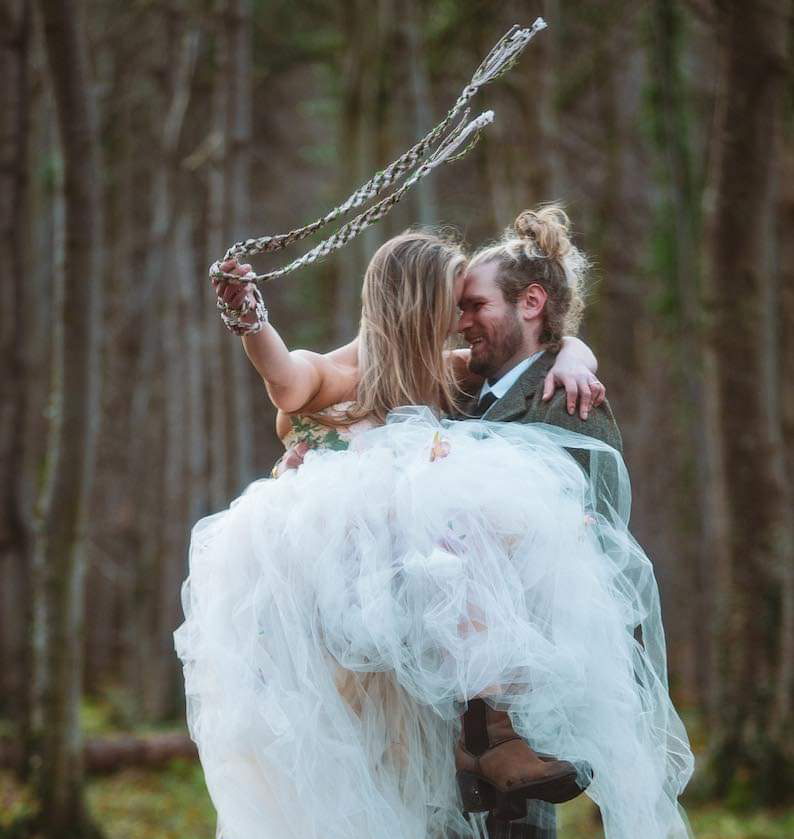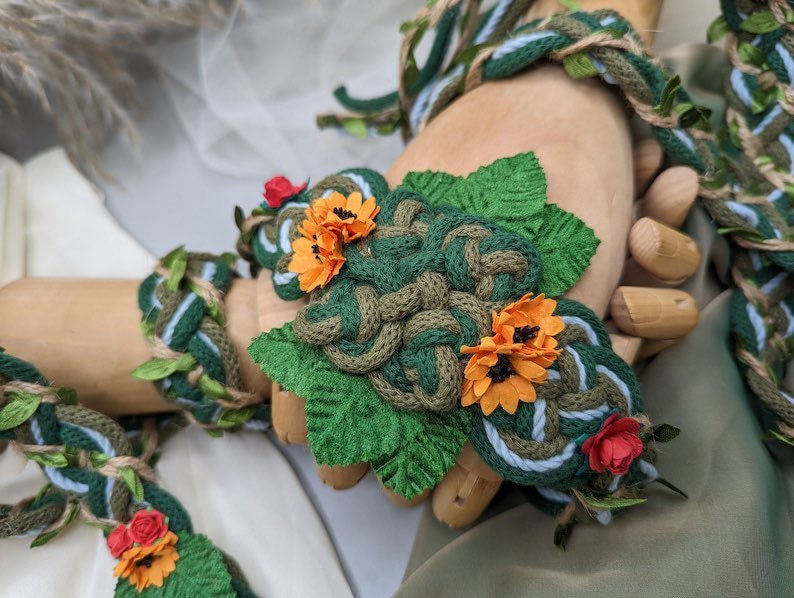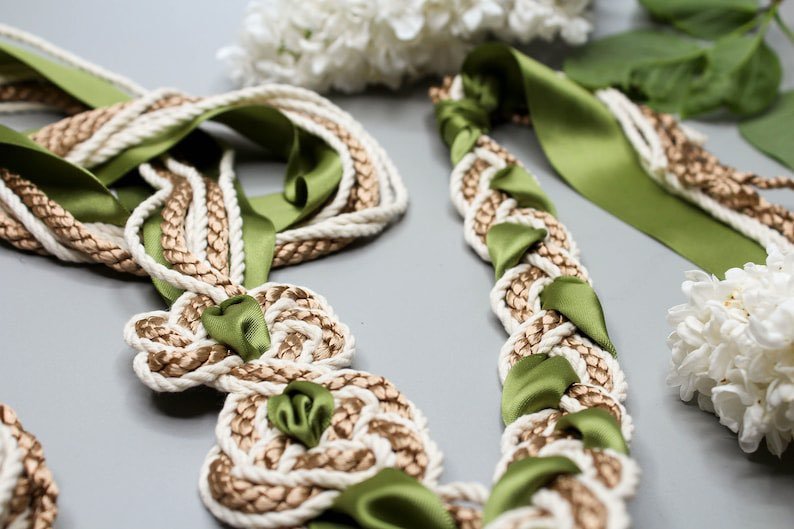About the Handfasting Tradition
What are handfasting cords?
The Triple Love Knot handfasting cord, an original Ceotha Design (find yours here)
A Handfasting cord (also known as a Handfasting rope, handbinding cord, or a handfasting ribbon) is a long piece of rope, ribbon, or fabric that is tied or wrapped around the hands of a couple during a wedding ceremony to symbolise the partners’ commitment to each other. Handfasting cords and ceremony are not attached to any religion in particular and there really is no right or wrong way of using them. Recently, more and more couples are adding handfasting ceremonies to their wedding, engagement, or anniversary celebration due the degree of flexibility and personal touch they bring to a ceremony, as well as a tangible memento of the moment they ‘tied the knot’.
Origins of the handfasting tradition
The origins of this beautiful tradition are shrouded in mystery. Most commonly, it is attributed to the Celts. However, due to the lack of written records there is very little known about Celtic traditions, so we really can’t know for sure. What we do know, is that phrases that connect love and commitment with the tying of cord or ribbon (such as ‘tying the knot’) can be found in almost all European languages. We also know that the tradition was well established and alive during the middle ages (although with regional variations) in Ireland and Scotland.
Are handfasting cords Pagan?
Handfasting cords are not associated with any one particular religion. Although they are a popular feature in Pagan weddings, they have historically equally featured in Christian ceremonies. Recently, they have also become increasingly popular in secular weddings as an interactive element that can add a beautifully personal and tangible touch to a ceremony
A happy couple featuring our Handfasting Cord - Infinity Tie Treasure Knot
Are handfasting cords only for Weddings?
Handfasting ceremonies are most commonly part of a wedding but they can also happen at an engagement or vow renewal. In some parts of Scottish tradition, a handfasting marks the beginning of a one year and one day long ‘marriage probation’. Similarly they can be conducted by an officiant in front all your wedding guests, it could be conducted by a friend or relative, or it can be a private occasion between two partners.
How should the cords be tied?
Again, there is no right or wrong way. Different officiants may have different approaches to the way they tie the rope or the words that are used. The couple usually either holds both hands crossed in front of each other or holds one opposite hand each (like shaking hands) – although I have also seen ceremonies where the partners simply stand next to each other and hold each other’s closest hand (my own wedding included). How you hold your arms is entirely up to you. In terms of tying the actual knot, the cords I design fall into two different categories:
Decorative Center Knots
Shop this cord.
Decorative Centre Knots feature a decorative knot in the middle of the cord which is placed on top of the couple’s hands. The sides are then wrapped around the wrists of the partners and tied in a simple knot underneath. This is a straightforward, easy technique that highlights the symbolism of the centre knot and can be beautifully displayed before and after the ceremony
Infinity Knots
Shop this cord.
Infinity handfasting cords are loose in the middle, with decorative knots and braids along the sides. This allows for the cord to be tied in such a way that, once the hands are slipped out, an infinity knot remains in the cord. This is a slightly trickier way of doing it – and I’d definitely recommend practising beforehand – but you get to keep the literal knot you tied at your wedding which makes for the most wonderful keepsake. A video showing how to tie the infinity here on my shop page.
How long should a handfasting cord be?
The length of your handfasting cord depends entirely on which way it is going to be tied. When you want to figure out how long your handfasting cord should be, think about whether you are going to be tying two hands or four hands, whether, or how many times you want to wrap it around, and how much of the cord you want to be cascading down off your hands.
Handfasting cord symbolism
Some couples choose the colour of their handfasting cords (or different strands of the cord) in accordance based on the meaning attributed to particular colours. However, it is equally legitimate to simply choose a colour scheme you just happen to like, or that works well with the theme of your celebrations (In fact, I often do custom designs based on a couple’s ‘mood board’ they’ve put together for planning their wedding.
Some people also attribute meaning to the amount of strings used in the cord. Based on Celtic folklore, multiples of three (3, 6, 9, or 12) are often chosen (although in some schools of thought, 7 is preferred.
The cords I design also make use of the symbolism of Celtic knots (you can read more about that here). Finally, many couples also opt to include charms or other decorative items in their custom design to let their cord tell the story of their relationship.





